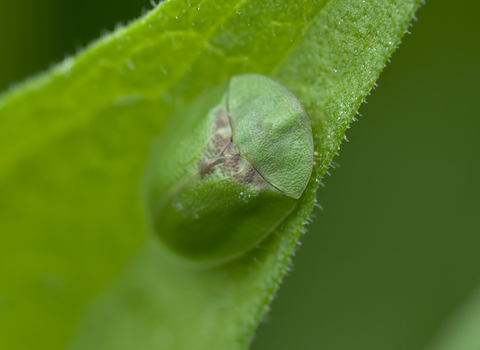
Green Tortoise Beetle ©northeastwildlife.co.uk
Green tortoise beetle
When threatened, the Green tortoise beetle acts just like a tortoise, pulling its feet and antennae in and hunkering down, gripping the leaf it is on as tightly as possible. Look for it on White Dead-nettle in gardens and hedgerows.
Scientific name
Cassida viridisWhen to see
April to OctoberSpecies information
Category
Statistics
Length: 8-10mmCommon.
